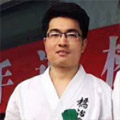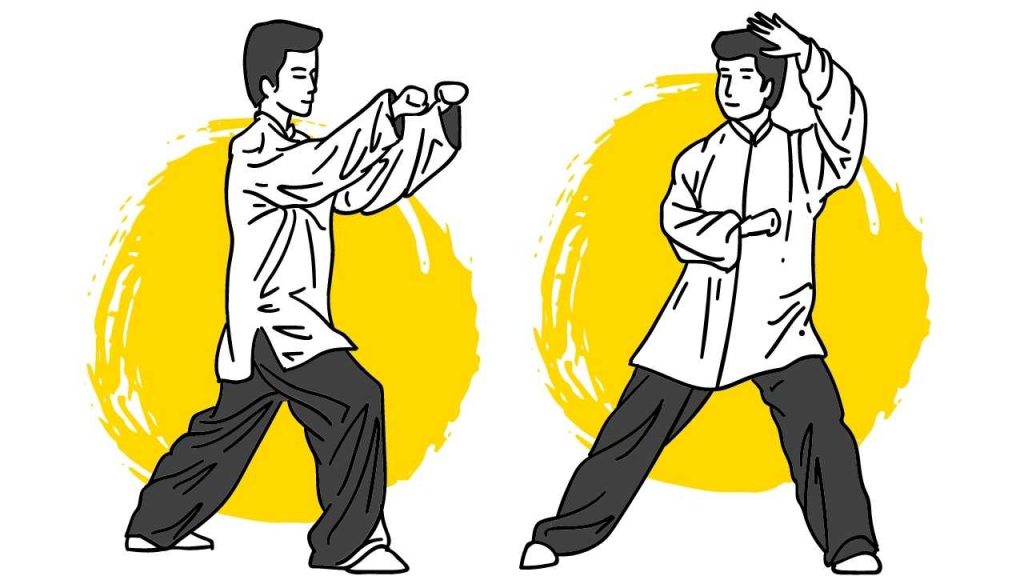Stances are the fundamental building blocks of every martial art, but Wing Chun takes that to the next level. In Wing Chun, the stance is fundamental to understanding and mastering it.
Here we’ll take a look at what these stances are, how you can perfect them, and which one you should be using. Read on to find out more!
Table of Contents
The Importance of Your Stance in Wing Chun
As stances are the developing tools that pave the way for Wing Chun students to become Wing Chun masters, it is important to understand the basics of stances. No matter their skill level, every Wing Chun fighter practices these stances in an effort to perfect them.
Wing Chun stances serve as a foundation for balance, stability, and efficient movement, and for this reason, this fighting style incorporates the use of more than one stance.
As Wing Chun has evolved over time, the stances also vary from school to school. However, this article will cover the basic Wing Chun stances commonly taught to beginners and advanced students.
It is important to note that mastering these stances is crucial for developing a strong foundation in Wing Chun, as they serve as the building blocks for more advanced techniques and movements.
Additionally, proper execution of these stances can also improve balance, stability, and overall body control.
Three Main Wing Chun Stances
There are three main Wing Chun stances which we’ll talk about in detail. There are also some other stances you can try out. Let’s see what they are.
1. Opening Stance (Hoi Munga)
As the name suggests, the opening stance is the first stance taught to students. The aim here is to begin with a relaxed and balanced posture that allows for mobility and readiness.
Hoi Munga position:
- Feet are shoulder width apart
- The toes should be pointing forward
- The knees should be slightly bent
While practicing, it is important to ensure that the stance is perfect. It is a relaxed and balanced posture, but many students are unable to understand the correct angle that needs to be implemented.
Care must be taken to ensure that the toes are facing forward. At the beginning, many have the problem of pointing them slightly in or out. You’ll also want your back to be as straight as possible.
The knees should be bent at a 135-degree angle. They should be slightly bent to lower the center of balance as this helps to maintain stability.
Around 135-degrees is perfect. If you’re not sure what 135-degrees is, it’s exactly halfway between a completely straight leg (180 degrees) and your knee at a right angle (90 degrees). If you bend your knees too much, it will cause pressure on the thighs and make balance more difficult.
2. Fighting Stance
In Wing Chun, a fighting stance consists of three sub-stances:
- The Forward Stance (Ma Bu)
- The Backward Stance (Ban Kuen)
- The Centerline Stance (Qian Jin Da)
Each stance has a specific purpose and is used in different situations during combat. It is important to practice each stance to develop balance, stability, and agility in order to effectively execute techniques and defend against attacks.
The Forward Stance – This is just like any other stance you may find in different fighting styles. One foot is placed in front of the other, and the dominant foot is positioned behind the front foot. It must not be exactly behind otherwise, it will be a side stance.
It is a wide, stable stance with the front foot facing forward and the back slightly positioned outward, approximately at 45 degrees. This stance is commonly used in Wing Chun and provides balance and stability while executing strikes and kicks.
Also, it allows for quick pivoting and shifting of weight, making it an effective stance for both offensive and defensive movements.
The Backward Stance – It’s not as popular as the forward stance, but it still has its benefits. The backward stance can be used to set up counterattacks and surprise the opponent with unexpected movements. The drawback of this is that your attack will not be powerful, but it is useful if you want to evade your opponent.
The Centerline Stance – The centerline stance is the true Wing Chun stance and is what helps to set it apart from many other forms of martial art. Here your punches will have the shortest distance to travel to your opponent and it allows you to be agile.
The stance here is very similar to the Opening Stance where you stand straight on to your opponent, with your feet pointing straight ahead. While this stance has its merits, it’s the one that is often seen as least effective in real-world situations, which is why it’s often seen as a training stance.
3. The Goat Stance (Yang Jong)
This is a variation on the centerline stance but has some serious drawbacks in fights. Here you’ll have your feet slightly wider than your shoulder width. Importantly, you’ll have your knees bent and your toes pointing slightly inward.
Many people find this to be uncomfortable as it can place pressure on your knee joints. However, it can be an effective way to defend against kicks.
Advanced Wing Chun Stances
While those three are the most common stances, here are some others which advanced Wing Chun practitioners can master.
The Side Stance (Doi Gok Ma) – This stance is similar to that of a boxer. The feet are placed parallel to each other, and the body is turned to the side. It is effective at landing a sidekick and quick for stepping backward and forward.
Single Leg Stance (Do Ma Stance) – This requires a lot of balance as you’ll get low and have one leg extended outward and the other directly under your body.
Crossed Legs Stance (Juen Ma) – With this stance, you have both your feet facing forward with one crossed over the other. This low stance can be an agile weapon against multiple opponents.
Final Thoughts
What is the correct Wing Chun stance for you? It depends on your goals, threats and what’s most comfortable for you. As you practice Wing Chun, you’ll soon find out what stances are best suited to you and your skill set.


